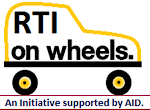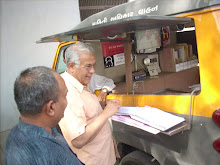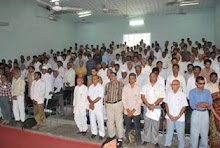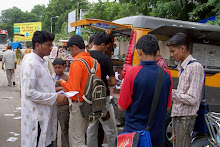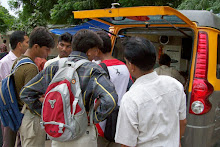NDTV: New Delhi: Monday, August 14, 2017.
On July 5
this year, a six-year-old boy, Vishal, died on the worksite of an
under-construction government housing colony in Ramapuram in Chennai.
In
photographs taken immediately after his death, he can be seen crumpled up on
the earth, his legs broken and covered in blood, and deep injuries to his head,
arms and face. His family, who work on the site, crouch over him in anguish.
The project
belongs to the Tamil Nadu Housing Board (TNHB); the contractors are a private
company, Sri Venkatachalapathy and Company.
The
contractors told us the child had been taken to the fourth floor by his father,
and he fell from an uncovered area. Other eyewitnesses say that a
heavily-loaded pulley which was being used to lift material up the building
fell on the child from the fourth floor.
Either
explanation raises serious questions of safety violations - children are not
allowed on worksites. Open areas of higher floors are meant to be protected by
safety nets. Equipment, like the pulley that purportedly caused the death, are
meant to be regularly checked for load-bearing capacity.
This
accident, part of NDTV's investigation into deaths at construction site,
highlights how even state-run projects can be death traps, not just for the
workers but also for their families. (See Part I of the investigation here)
The same lack
of oversight we had found on private worksites seem to afflict even government
commissioned projects.
Even though
the contractor was named in the FIR and charged with death due to negligence,
no arrests were made.
According to
the Building and Other Construction Workers Act, 1996, being the principal
employer, the TNHB should have conducted an inquiry into the accident. The law
also says that any site that has more than 10 women workers must have a creche
for children on site.
When NDTV
contacted the TNHB, the Managing Director was not aware of any such incident.
Instead, the Board handed us glossy photographs of the site with safety nets on
building, lift shafts covered and a functional creche.
When we tried
to contact the contractor, Sri Venkatachalapathy and Company, the address led
us to an apartment in Chennai. The occupant told us that it was not an office.
We were directed to another house in the same building, which was shut.
On the day we
visited the site, there was clear evidence that despite the accident, safety
measures were ignored. Safety nets were rolled and kept in a corner, tugged on
by stray dogs. The same building from where the accident happened had no hand
railings.
A similar
pulley system to the one that allegedly caused the accident was in use, with
frayed wires and its controls in poor shape. And families with children could
still be seen staying inside the buildings.
According to
the TNHB, there are an estimated 30 children on site.
A
first-of-its-kind attempt by NDTV to gather country-wide data on deaths and
injuries at construction sites through RTI applications and through police
sources shows that between 2013 and 2016, approximately 1,092 workers died and
377 were injured.
We were not
given separate data on deaths at government projects.
But we did
receive RTI replies on deaths in Metro construction sites. This shows that 46
deaths, eight injuries and 55 accidents happened between 2013 and 2016 in Metro
construction sites in 7 cities.
Compared to
most worksites in India, Metro sites appear to maintain much better safety
standards. Workers can be seen wearing boots, safety belts, helmets and jackets
while working.
Yet, these
sites too can turn fatal.
On July 1st, Amarendra
Ram, a worker from Bihar was crushed under a falling iron beam, while working
underground at the Chennai Central Metro construction site.
The
contractor for the stretch of the metro where the death took place is AFCONS
Infrastructure. However, police action was only against the site supervisor,
who was arrested on charges of death due to negligence. He is out on bail.
Chennai Metro
Rail Limited did not respond to NDTV's queries on the inquiry conducted in the
accident and what action was taken against the contractor.
"In mega
construction projects like the Metro, you find that there are multiple
contractors. Apart from that there are contractors who are concerned with the
heavy equipment. They come with their own machinery and this complicates
matters. If any mishap happens because of the fault of the other contractors or
because of absence of safety officer, the smaller ones who come for a very
short time are penalised. They are forced to pay for the compensation and are
blamed for the mishap," says R Madhu Sudan, activist and researcher on the
construction industry.




